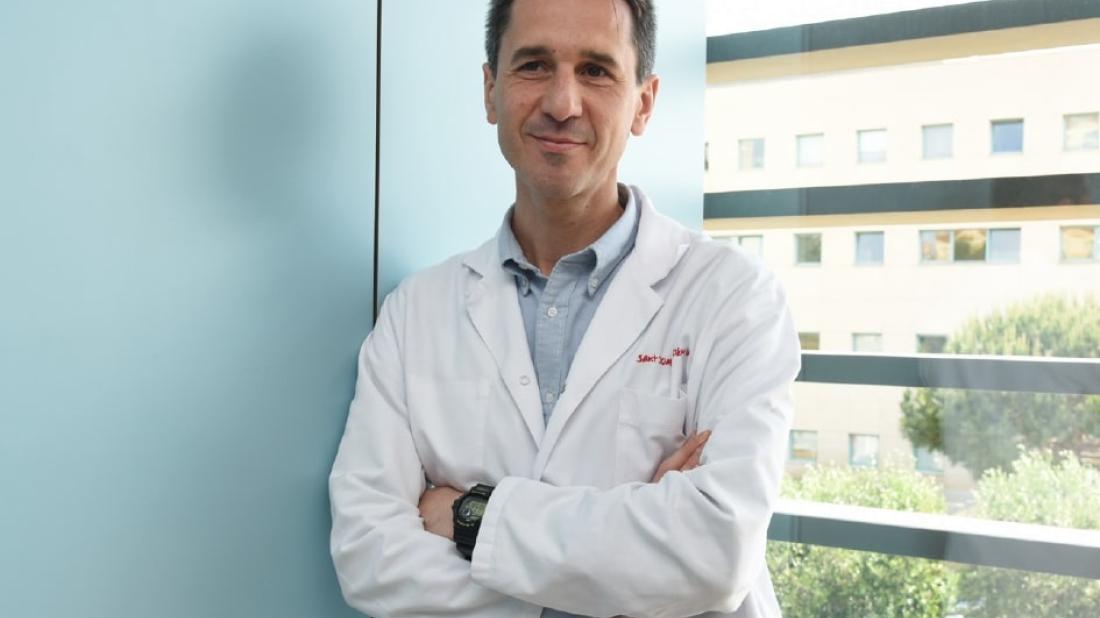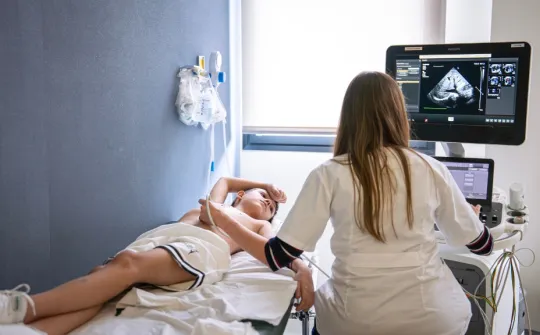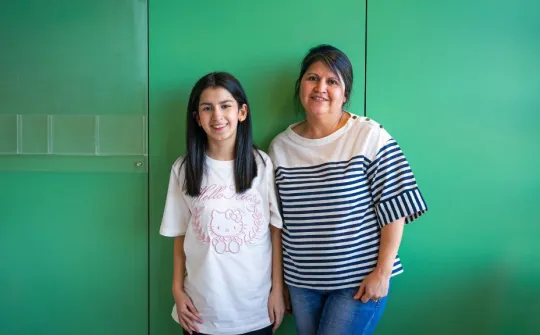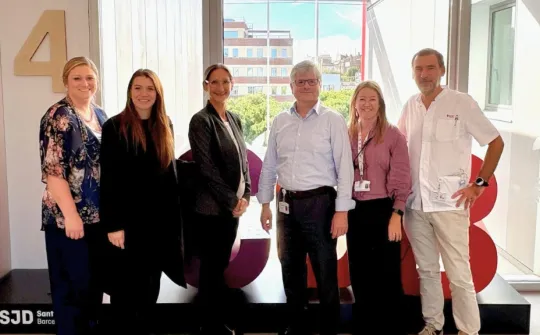"Our great challenge is to cure patients with heart disease and ensure a good quality of life in adulthood”

Interview with Joan Sánchez de Toledo, Head of the Pediatric Cardiology Service at the SJD Barcelona Children's Hospital
The Heart Area of the SJD Barcelona Children's Hospital is a national and international flagship in terms of the treatment of cardiac pathologies. It provides consultations to 10,000 patients every year and performs an annual average of 250 surgeries -160 of them extracorporeal- which makes it the unit that performs the most pediatric heart operations in all of Spain. However it is also concerned about going beyond the act of surgery and performs research into specific areas, such as the two that were carried out in 2018, directed by Joan Sánchez de Toledo with very diverse objectives.
Are children's cardiac pathologies different from those of adults?
Yes, totally. In children they are based on congenital malformations and acquired heart disease and, in adults, we are talking about pathologies that have a lot to do with ageing, therefore, all their treatment is focused on prevention and treating the consequences of the aging process. But this is completely different to what happens in children.
What can cause a child to have a healthy heart and suddenly develop a heart problem?
There may be viral infections, immunological processes or side effects of aggressive treatments such as chemotherapy, which cause them to develop heart disease that will affect them for life.
What goal do you hope to achieve with these patients in the near future?
At this time, infant mortality in patients suffering from congenital heart disease may be less than 1% in highly specialised centres such as ours. We are very good at what we do, but the goal now is for these children not only to reach adulthood, but to reach it in good condition and have a good quality of life. All the work we are doing now from the Hospital in terms of research is directed at this.
Is research into adults applicable to children?
As cardiology research is closely related to technological advances in imaging, we can take advantage of it, especially to improve pediatric diagnosis. But it is true that this type of development is always designed for adult pathologies and when we need to develop specific technologies for children we are totally left out, because the number of children with heart problems is much lower compared to the adult population. A clear example is that when we perform catheterisation, we often use adult catheters because it would never be profitable for the industry to develop smaller catheters, so it doesn't interest them.
And hence the importance of donations…
Precisely. Philanthropy is also vital for the advancement of pediatric cardiology and it is vital not only in Spain, but also in the United States or in any other developed country.
And the number of children affected by heart problems is high when compared to other pediatric pathologies...
The incidence in Spain is between 0.8% and 1% of births. That is about 4,000 children annually with heart problems, 400 of them in Catalonia. And of all of them, 40% will need some type of surgery. But even so, the number is not high enough for big industry.
Regarding research into the impact of congenital heart disease on neurodevelopment, from what hypothesis do we start?
We see that many of the patients who have had successful heart surgery begin to present problems derived from many things: residual lesions from surgery, kidney problems, etc.. But some of the most serious are brain damage problems, which may be more or less acute or evident, but that ultimately cause life-long deficits. We are talking about the fact that 30% of operated patients have neurodevelopmental problems that directly impact their daily lives: behavioural retardation, for example, which causes them problems in school.
And what else do we know?
When analysing the resonance images of patients born with heart disease, we see that almost 30% already have some type of lesion in the cerebral white matter that resembles that of premature infants. Therefore, something happens at the level of cerebral flow that affects and somehow alters the normal development of the brain. And, what worries us is that very invasive surgery such as heart surgery is being performed, with all that this entails, on a patient who is already vulnerable.
What would be the objective of this line of research then?
Firstly, to try to diagnose, incorporating new imaging and monitoring techniques that allow us to analyse brain function well during the critical stages of these patients: during fetal life and when they are born. And, we are especially interested in analysing the behaviour of the brain during the critical moment of surgery and the postoperative period.
Secondly, we want to know what we can do during the intervention process to see if we can change trends. It's about preventing the brain from suffering while the heart is being operated on.
How are we doing this?
It is really very difficult to apply new treatments on a patient in the current stage, which is very early, so we have created the first "pediatric" animal model of extracorporeal circulation and we are simulating everything that happens in the operating theatre in the animal housing unit. In this way we can try new technology, new medicines, new variations on how to intervene that allow us to modify the real behaviour in the patient.
The other line you are focused on is the development of computational models and new imaging techniques for the study of cardiac functionalism. What does this consist of?
We are analysing the functionalism of the heart and how all pathologies that are not purely cardiac impact negatively on it. An example would be the cancer patient, who undergoes chemotherapy and then we see that, over time, the heart is suffering. But we detect it once the injury has already been established, when it is too late. What interests us is to be able to detect all these changes very early on.
How is this early detection achieved?
By applying advanced imaging techniques to anticipate heart failure. And this does not only apply to children with cancer, but also to patients with bronchiolitis or sepsis who suffer a lot with the heart.
How has pediatric cardiology evolved over the years?
This specialty is constantly evolving. What we do is diagnose cardiovascular health with imaging tests. A few years ago, we had very simple ultrasounds. Instead, we now have very powerful ultrasound scanners that, in a non-invasive way, allow us to identify lesions and study the function in more detail. In the Hospital we also have new magnetic resonance equipment that allow us to make very precise diagnoses. Currently, we work with the Universitat Politècnica de Catalunya and with the Hospital Innovation team to perform 3D prints of the heart. This greatly facilitates the work. Currently we can present the surgeon with a case including a three-dimensional model that previously had to be assessed using a flat image. Another great innovation that has been achieved over the years is telemedicine.
Could you tell us more about telemedicine and its possibilities?
Being able to share your experience with a team of professionals from the other side of the world is very valuable in many ways. Thanks to telemedicine, from Barcelona I can enter the ICU of a hospital in Brazil, assess their analysis and offer them a therapeutic recommendation. The transfer of knowledge from a fixed place to the other side of the world is the future.
At SJD Barcelona Children's Hospital telemedicine allows us to advise professionals from remote areas. We can advise them on what to do with the information we have. Technology offers us infinite possibilities, it even allows us to predict the future, it is what is known as predictive analysis. We collect all the data that we have in the databases, we enter them into a programme, and this creates the predictive analysis from which the doctor obtains very valuable information in order to make the best decision.
What can we do in terms of cardiovascular disease prevention?
We are seeing more and more children with obesity problems and, although at the moment they are children who have no cardiovascular problems, they will most likely develop such problems within 15 years. We are trying to know exactly what impact these changes that affect a child at pediatric age would have on their adult life. We are carrying out studies of advanced heart function in obese children to show that they do have a problem and that it will become more acute over the years.
We work together and transversally with other specialties, such as Neonatology. Another group of relevant patients are cancer patients, since they take medication over long periods of time that have an impact on cardiovascular health and, of course, must be closely monitored by our Area.
In what direction do you think cardiology should continue to advance at SJD Barcelona Children’s Hospital?
I think we are on the right track to having a "Heart Centre" soon where, just like in other international centres, the patient with cardiac pathology is located at the centre of the whole process and all professionals from various specialties, as well as researchers, focus on it with a global approach.



